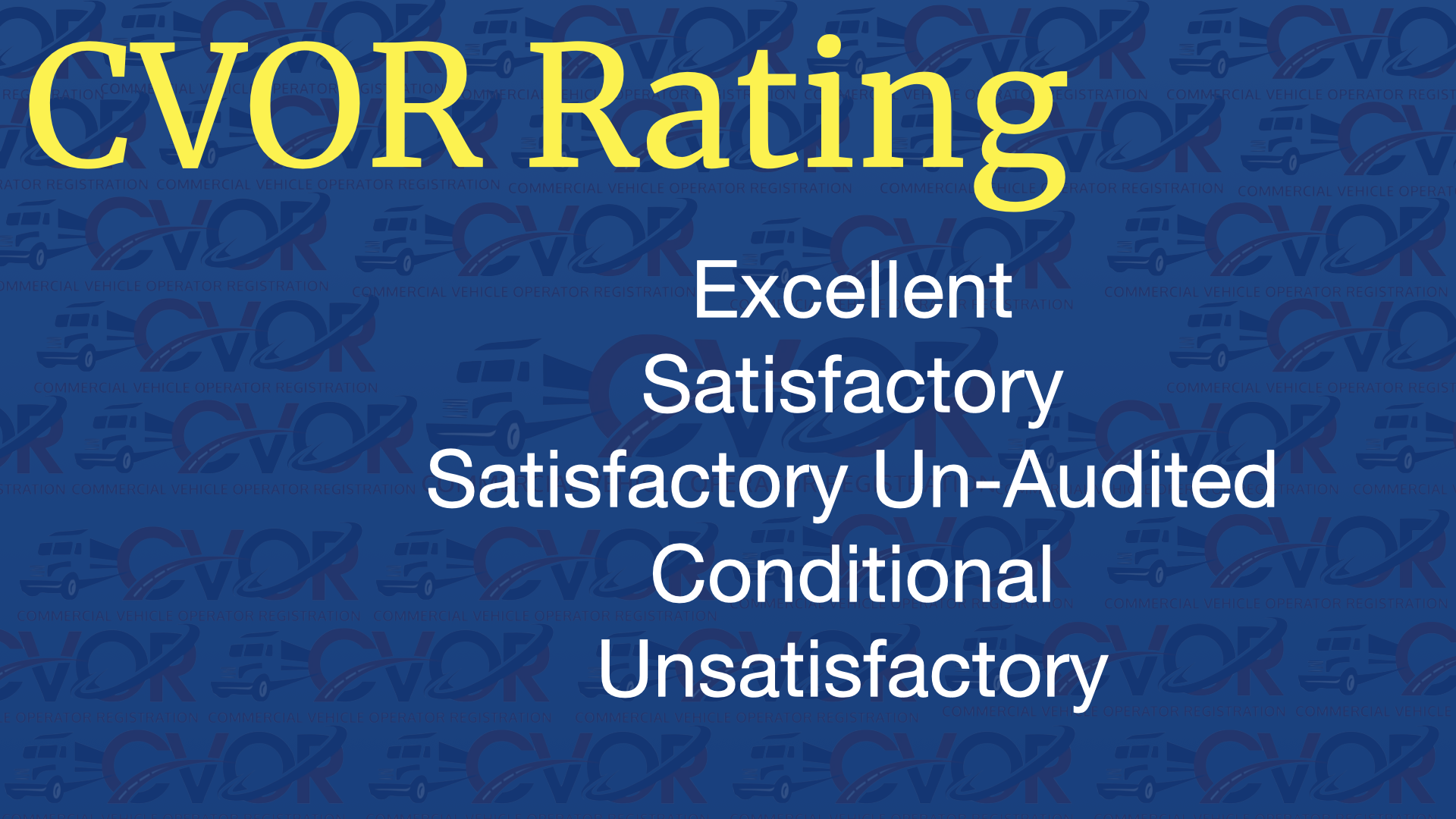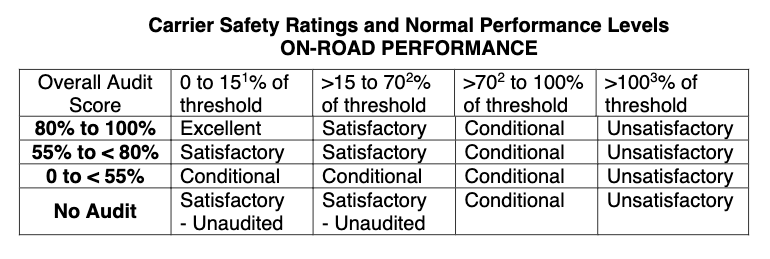CVOR courses & consulting. I help you.
CVOR courses & consulting. I help you.

Your commercial motor vehicles need to be regularly serviced and well maintained. Your CVOR record needs to be protected. As a CVOR operator, you and your drivers must keep your record as clean as possible. Keeping your score low is done by the drivers obeying the Highway Traffic Act and not having collisions.
If a carrier with a commercial vehicle operator’s registration (CVOR) wants to get an Excellent Safety Rating, they need to meet certain conditions. These include:
To maintain the Excellent CVOR Rating, your safety performance must be extraordinary, your overall violation rate can be no greater than 20% and your collision violation rate can’t exceed 15%.

If you don’t keep these low carrier safety rating scores, your rating will be downgraded or changed.
If a carrier gets an Excellent rating, they must keep their violation rates low and maintain outstanding safety performance. If they don’t, their safety rating will go down.
A Satisfactory Safety Rating means:
Six months of operation
Holds a valid commercial vehicle operator’s registration (CVOR) certificate
Overall Violation Rate of 70% or less (safety rating)
Passed an MTO Facility Audit
•The Satisfactory Safety Rating is achieved after six months of operation with a valid commercial vehicle operator’s registration (CVOR) certificate. • It requires an overall Violation Rate of 70% or less and the successful passing of an MTO Facility Audit.

Overall Violation Rate of 70% or less (safety rating)
•The Satisfactory Safety Rating is achieved after six months of operation with a valid commercial vehicle operator’s registration (CVOR) certificate.
•

Carrier has failed an MTO Facility Audit
Carrier Safety Rating exceeds 70% (safety rating)
Your CVOR suspension or plate seizure has ended
A person or company who is related to or affiliated with the CVOR holder and that person of the company has a CVOR that is rated Conditional.
NOTE: Conditional ratings last at least six months. That is unless the rating is moving from conditional to unsatisfactory.
If you failed a facility audit, the only way to upgrade your commercial motor vehicle rating is to request a facility audit. Once this is asked for, your request is reviewed. You will receive either an ASRA letter or you will be audited.
If you went over 70% and received a conditional rating, you will remain conditional for at least six months and for it to be upgraded, you must get your overall violation rate below 60%
•If a carrier fails an MTO Facility Audit, they must request a facility audit to upgrade their commercial motor vehicle rating.
• When the request is reviewed, either an ASRA letter will be issued, or the carrier will be audited.
• A Conditional Safety Rating lasts for at least six months unless it moves from conditional to unsatisfactory.
• For a Conditional Safety Rating to be upgraded, the overall violation rate must fall below 60%.

The overall violation rating (safety rating) is over 100%. An unsatisfactory safety rating can quickly put you out of business. An unsatisfactory safety rating forces your insurer to non-renew, forcing you into the facility market.
This rating can cause a suspension of your carrier’s operating privileges, taking your commercial vehicles off the road.
•The safety rating is unsatisfactory, with a violation rate of over 100%.
• An unsatisfactory safety rating can lead to the business being shut down.
• Insurers may choose not to renew coverage if the safety rating is below satisfactory levels.
• This would force businesses into the facility market to secure insurance coverage.
A good safety rating is essential for any transportation carrier, especially those engaging in commercial business activities in Ontario. Keeping these ratings high requires attaining and maintaining an Excellent CVOR Safety Rating. Meeting the necessary conditions involves:
Should the safety performance dip too low, the rating will be downgraded, impacting business relationships and partnership opportunities. Therefore, carriers must stay on top of their safety performance metrics to ensure that they meet these criteria for keeping an excellent safety rating.
Chris Harris, Safety Dawg